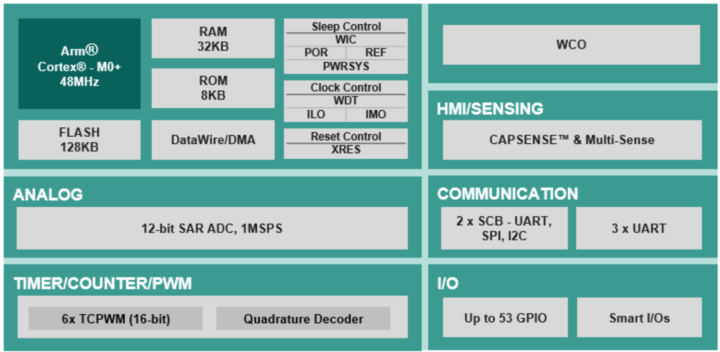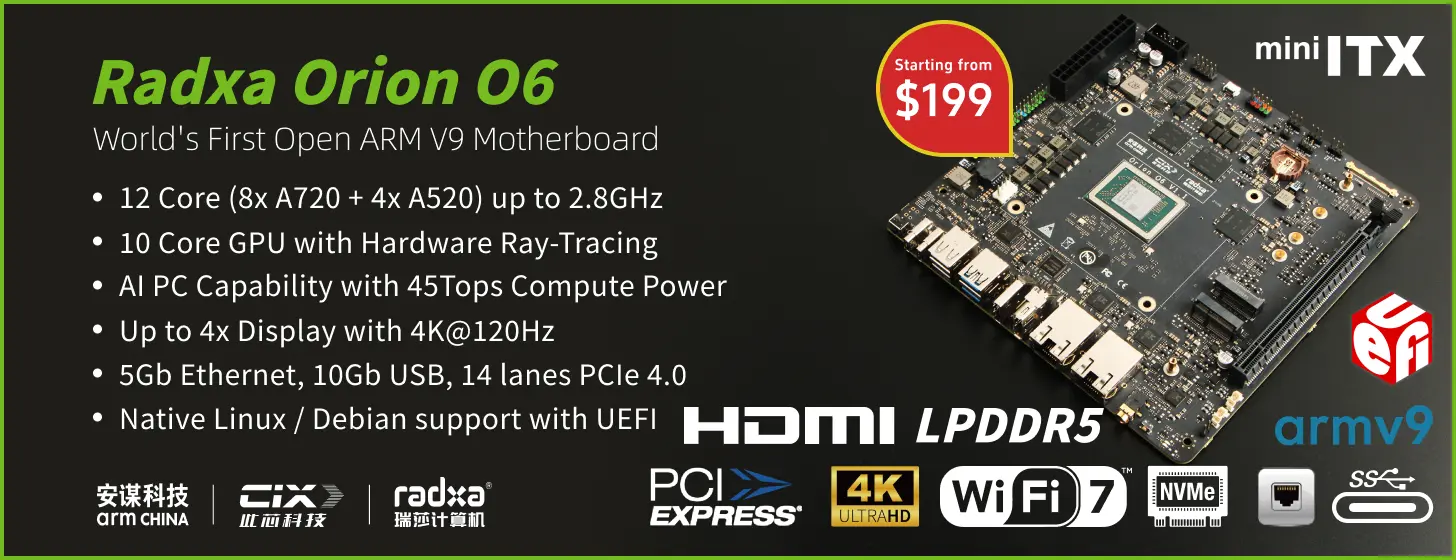Infineon PSoC 4100T Plus is a new low-power Arm Cortex-M0+ MCU designed for battery-powered or low-power embedded systems that require advanced capacitive touch and proximity sensing. The microcontroller comes with 128 KB of flash, 32 KB of SRAM, and an 8 KB ROM.
One of the most interesting features of this MCU is Infineon’s fifth-generation CapSense MSCLP technology, which enables high-resolution, low-power capacitive sensing even in deep sleep mode (as low as 8 µA). Its capacitive sensing uses both self and mutual capacitance methods, supported by analog front-end filtering, sigma-delta modulation, and digital filtering techniques, delivering a signal-to-noise ratio greater than 5:1 for accurate detection. The MCU supports gesture detection, human-machine interfaces (HMI), and smart sensing applications, making it ideal for wearables, consumer devices, and IoT systems. Additional features include a 12-bit 1-MSps SAR ADC, six TCPWM blocks, smart I/O with programmable logic functions, multiple UART/I2C/SPI interfaces, and up to 53 GPIOs.
Infineon PSoC 4000T Plus specifications:
- MCU Core – 48 MHz Arm Cortex-M0+ CPU with single-cycle multiply
- Memory – Up to 32 KB SRAM
- Storage
- Up to 128 KB flash with read accelerator
- 8 KB supervisory ROM with boot and configuration routines
- Sensing capabilities
- 5th-generation CAPSENSE technology
- Architecture – Ratio-metric sensing in Multi-Sense Converter Low Power (MSCLP)
- SNR – 5:1
- Sensing methods – Mutual capacitance, self-capacitance, and inductive sensing
- Low Power Scanning Modes – Wake-on-Touch (WoT) and Active Low Refresh (ALR)
- WoT average current – 8 µA (16 Hz refresh, 52 pF sensor, 0.2 pF sensitivity, 1.8V)
- Active scan average current (CAPSENSE) – 300 µA (13 sensors, 4 pF each, 0.1 pF sensitivity, 1.8V, 128 Hz refresh)
- 5th-generation CAPSENSE technology
- Peripherals
- 2x Serial Communication Blocks (SCBs) supporting I2C, SPI, UART (runtime reconfigurable); One SCB can operate in any mode; the other is an I2C master/slave block
- 3x dedicated UART blocks with RTS and CTS
- 6x 16-bit Timer/Counter/Pulse-Width Modulator (TCPWM) blocks
- Clock
- Internal Main Oscillator (IMO) – ±1%, 24 MHz to 48 MHz in 4 MHz steps
- Internal Low-power Oscillator (ILO) – 40 kHz (nominally)
- Watch Crystal Oscillator (WCO) – 32-kHz
- 12-bit Successive Approximation Register (SAR) ADC with 1 Msps
- Up to 53 programmable GPIO pins (on 64LD TQFP package)
- Debug – Arm Serial-Wire Debug (SWD) interface (four breakpoint comparators, two watchpoint comparators)
- Power
- Operating voltage – 1.71V to 5.5V
- Modes – Active, Sleep, Deep Sleep
- Active mode current (Execute from flash, 48 MHz CPU) – 8.6 mA (Typ @ 3.3V, 25°C)
- Sleep mode current (I2C wakeup, WDT, comparators on, 6 MHz, Regulator on) – 1.7 mA (Typ @ 3.3V, 25°C)
- Deep Sleep mode current (I2C wakeup, WDT on, VDDD=2.0 to 3.6V) – 2.5 µA (Typ @ 3.3V, 25°C)
- Package options
- 44-pin TQFP (10x10x1.4 mm, 0.8mm pitch)
- 48-pin TQFP (7x7x1.4 mm, 0.5mm pitch)
- 48-pin QFN (6x6x0.6 mm, 0.4mm pitch)
- 64-pin TQFP (10x10x1.4 mm, 0.5mm pitch)
After checking the products page of the MCU carefully, I can see there are a total of 40 PSoC 4100T Plus series MCUs present, some of which are tagged new, and some of those are tagged coming soon. Out of which the CY8C4147AZQ-T493, CY8C4147AZQ-T495, and CY8C4147LQQ-T493 can be considered the most powerful MCUs with 28KB Flash, 32KB SRAM, and both CapSense and Multi-Sense capabilities. On the other hand, the CY8C4146AZI-T403, CY8C4146AZI-T405, CY8C4146AXI-T403, and CY8C4146LQI-T403 are the least powerful ones with 64KB Flash, 16KB SRAM, and lacking both CapSense and Multi-Sense technologies. It’s important to note that all the MCUs have the same 48 MHz Arm Cortex-M0+ CPU with similar ADC and communication block specifications. The main differences are in memory, specific sensing capabilities, I/O pin count (related to package type), and operating temperature ranges.
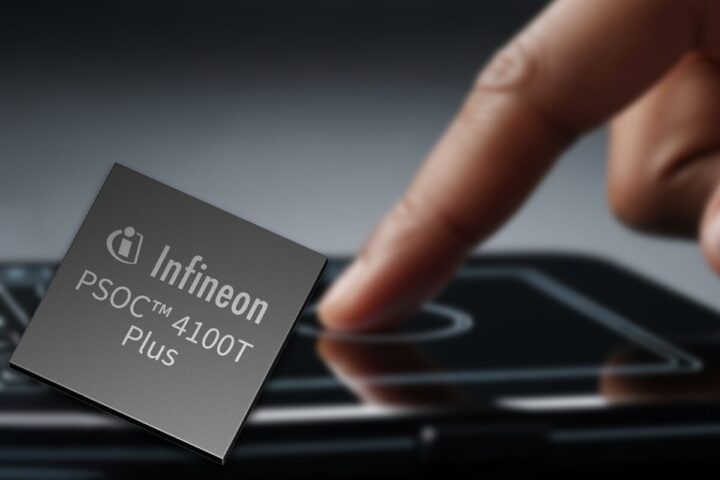
In terms of software, PSoC 4100T Plus MCU supports Infineon’s ModusToolbox software platform, which comes with various development tools, middleware, and libraries designed for embedded applications. ModusToolbox includes Board Support Packages (BSPs), the Peripheral Driver Library (PDL), and specialized middleware such as CAPSENSE for the development of capacitive touch interfaces.
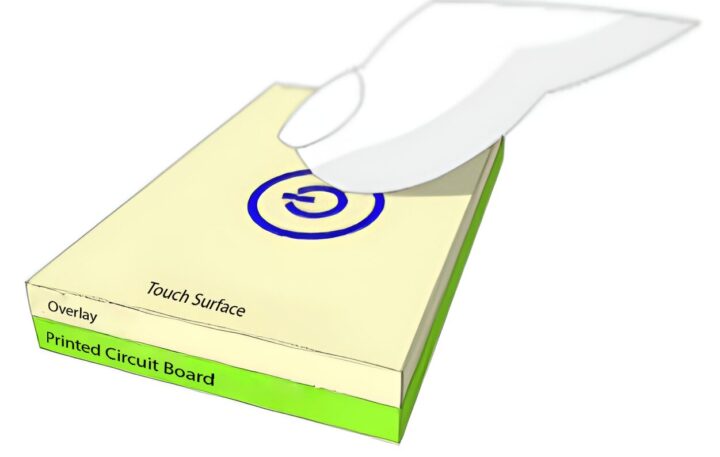
The CAPSENSE sensors use a copper pad on a PCB, covered by a non-conductive overlay as the touch surface. The pad connects to PSoC GPIOs, which detect changes in self-capacitance (CSX) and mutual capacitance (CMX). Internal circuitry converts these changes into digital counts for touch detection. External capacitors like CMOD, CINTA/CINTB, and optionally CTANK (for shielding or proximity sensing) are needed, depending on the CAPSENSE generation. Fifth-generation devices use two CMOD capacitors per channel. These are connected between GPIOs and ground, with recommended values that can be found in the design guide.
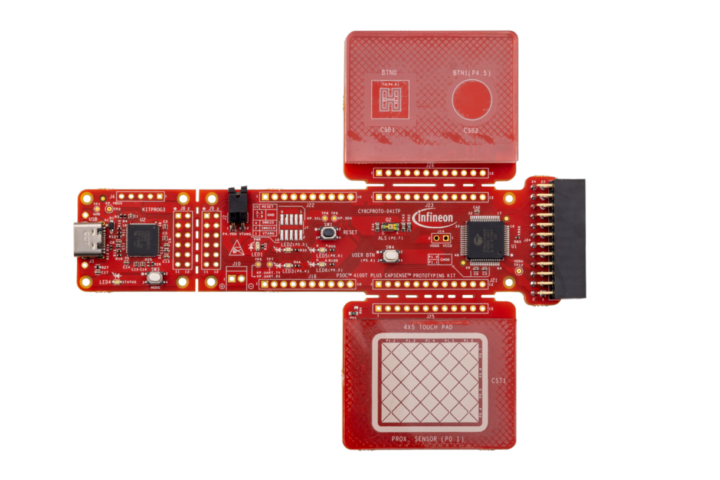
The company provides the CY8CPROTO-041TP prototyping kit based on the PSoC 4100T Plus MCU. It features a CAPSENSE button and slider for quick evaluation of Infineon’s capacitive sensing technology. The board includes a PSoC 4100T Plus MCU with 32 KB Flash and 4 KB SRAM, and supports USB-based programming/debugging via an onboard KitProg2 interface. The compact form factor and Arduino-compatible headers make it easy to integrate with external sensors and components for rapid development and testing. The board is also compatible with the CY8CPROTO-040T-MS kit board, which expands users’ access to liquid level sensing and hover touch. More information about the development board can be found on the product brief and its product page.
If the name feels familiar, it’s because Infineon introduced the PSoC 4000T multi-sense low-power MCU (no Plus) a few months ago with capacitive, inductive, hover, and non-contact liquid sensing. The main difference between the two is that they target different levels of application complexity. The PSOC 4000T is optimized for low-cost, low-power designs such as simple HMI interfaces and basic liquid detection, and is suitable for wearables and small appliances. In contrast, the PSOC 4100T Plus offers more resources, including up to 128 KB Flash, 32 KB SRAM, and additional I/Os, to handle both advanced sensing and embedded system control tasks in more demanding applications like fully integrated appliance controllers. While both are software and package compatible, the 4100T Plus is better for applications requiring more processing power, system logic, and memory for features like ML/AI-based sensing.
Infineon provides direct buying links for the PSoC 4100T series MCUs on the product page, though most of those are out of stock on Infineon’s store page. But a quick search on Digikey revealed that it’s in stock and the high-end CY8C4147AZQ-T493 sells for $5.83, while the low power CY8C4146AZI-S443T goes for $2.12 per piece for 1,500-unit orders. Additional information may also be found on the press release.
Debashis Das is a technical content writer and embedded engineer with over five years of experience in the industry. With expertise in Embedded C, PCB Design, and SEO optimization, he effectively blends difficult technical topics with clear communication
Support CNX Software! Donate via cryptocurrencies, become a Patron on Patreon, or purchase goods on Amazon or Aliexpress. We also use affiliate links in articles to earn commissions if you make a purchase after clicking on those links.

